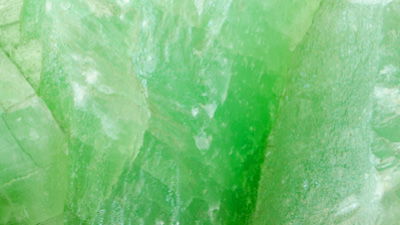
Diamonds May Offer Clues to Earth's Earliest Life
BBC News: “Diamonds Hint at ‘Earliest Life’” The diamond may be more than a girl’s proverbial best friend—it may be an old-earther’s best friend, too, if a recent Nature report is accurate.
Some diamonds are considered by those who believe in an ancient earth to be among the oldest substances around. So it’s no surprise that if traces of life were trapped inside such crystals, they would correspondingly be considered “ancient.”
They are considered the only remnants of long-since-eroded rocks.
The scientists publishing in Nature were examining zircon crystals “formed a few hundred million years after the Earth came into being.” Less than half of a millimeter across, the crystals were found in the Jack Hills of Western Australia. They are considered the only remnants of long-since-eroded rocks.
So what’s the “smoking gun” of life hiding in the zircon crystals? Using chemical analysis of diamond and graphite inclusions in the crystals, the research team discovered that the crystals contained a form of carbon “often associated with plants and bacteria,” in the words of the BBC News report. Thus, the finding may indicate proof of ancient life on earth.
Now we get to separating fact from fiction—or, at least, evolution-driven speculation. First, let’s read what one of the authors of the paper, Martin Whitehouse of the Swedish Museum of Natural History, had to say about the research:
“We’re all a little s[k]eptical. When you look at the carbon isotopes they could be interpreted as biogenic because we know that biologic processes do generate light carbon isotopes. But of course there are other processes that can do that.”
The researchers list chemical reactions with carbon oxides, extraterrestrial origin of the material, and contamination as other possible sources of the carbon isotopes in the diamonds. For instance, commenting on the possibility of contamination, University of Copenhagen professor Minik Rosing explained, “If you look at the photos that they present you always see these diamonds sat in cracks and fissures and cavities [as opposed to being deeply embedded within the host zircon crystals]. There is always fear that they might actually not be primary.”
And Whitehouse acknowledges Rosing’s first problem. “The problem with the Jack Hills is that we don’t have the rock. The carbon isotopes alone are not a distinct biosignature.”
“If that is the case, then every other argument about these zircons falls apart,” Rosing said. “Then we don’t know anything.”
But Rosing also suggests the possibility that it was an inorganic chemical process that produced the light carbon isotope. Referring to the carbon found in the diamond inclusions, Rosing claimed, “That to me is completely the opposite of a biological signature. That’s the signature of some chemistry—a fractionation process or something.” Furthermore, Rosing points out that “if the diamonds and zircons are of extraterrestrial origin” the isotopes give no such indication of life. “If that is the case, then every other argument about these zircons falls apart,” Rosing said. “Then we don’t know anything.”
Thus, it sounds like secular scientists have already done a pretty good job disputing this find. But forgetting about their own doubts, let’s continue to look at why this find, if it could be “proven” to be a sign of life, is considered evidence for ancient life.
Unsurprisingly, it’s the age-old (pardon the pun) evolutionists’ argument of radiometric dating again! Dating of some of the zircon crystals “suggested” (in the words of the BBC) that they formed “as far back as 4.4 billion years ago.” If you accept that date, then, except for the possibility of contamination, the carbon isotopes in the diamond inclusions must also be that old. But take a look below for resources exposing the old-earth presuppositions required to make radiometric dating “work.”
Furthermore, beyond the shaky science of radiometric dating, evolutionists still have yet to come up with a plausible explanation of how atoms could self-organize into code-bearing, code-interpreting, metabolizing, reproducing cells—and how these cells could have found their way through chance mutations into the complex animals and humans alive on the earth today.
For more information:
Remember, if you see a news story that might merit some attention, let us know about it! (Note: if the story originates from the Associated Press, Fox News, MSNBC, the New York Times, or another major national media outlet, we will most likely have already heard about it.) And thanks to all of our readers who have submitted great news tips to us.
(Please note that links will take you directly to the source. Answers in Genesis is not responsible for content on the websites to which we refer. For more information, please see our Privacy Policy.)
Recommended Resources

Answers in Genesis is an apologetics ministry, dedicated to helping Christians defend their faith and proclaim the good news of Jesus Christ.
- Customer Service 800.778.3390
- © 2024 Answers in Genesis





